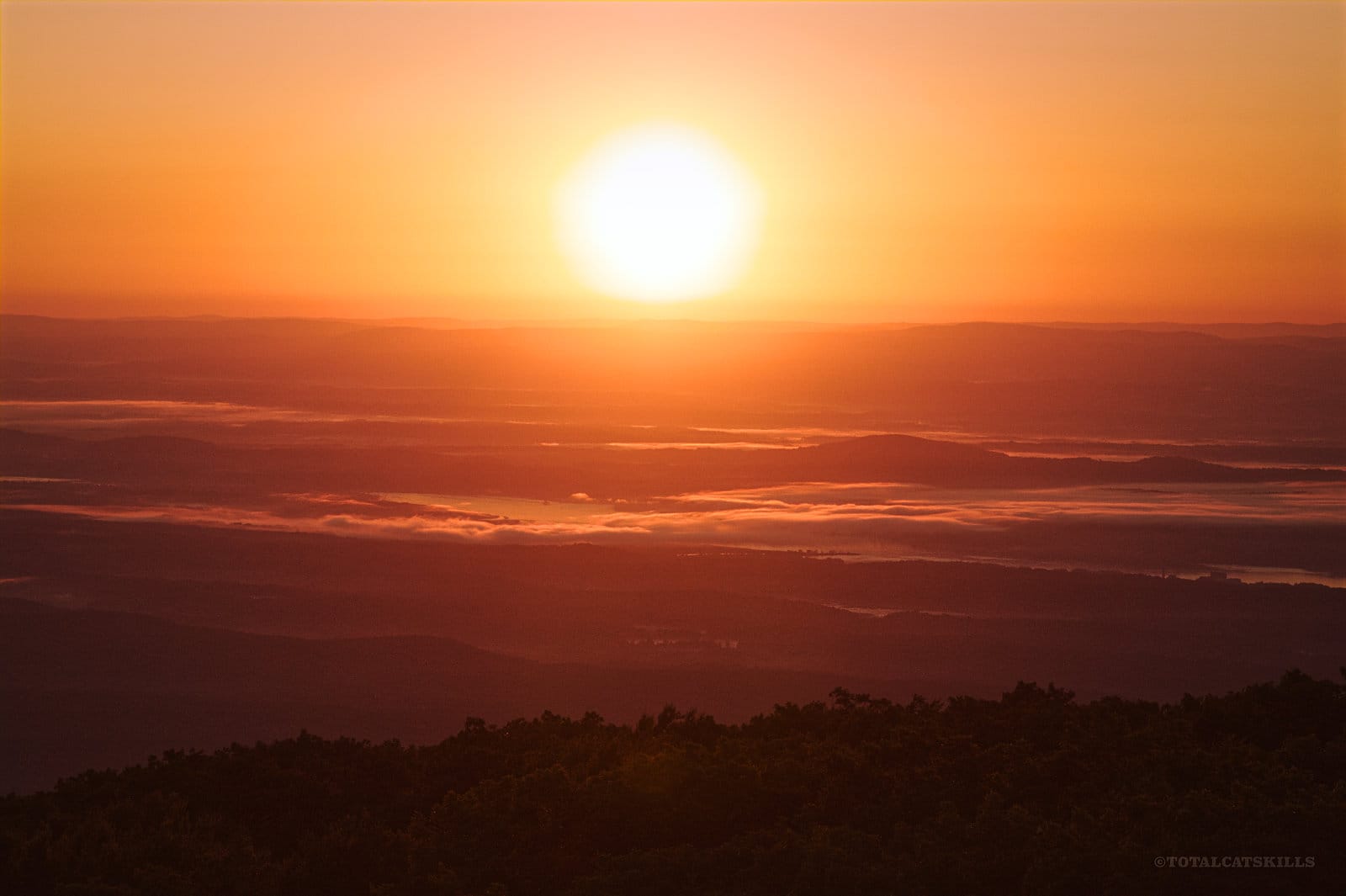Disclosure: This content may contain affiliate links. Read my disclosure policy.
Dawn and dusk: there’s no better time of day to shoot landscapes than when the sun is low on the horizon — here are the best camera settings to use and the photography tips you need…</strong >
The warm hues and dramatic horizontal light bring the mountain ridge lines, valleys, lowlands and water bodies into clear relief.
Many of the most photographic weather phenomena occur after the cool of night. The amazing light and cool temps combine with morning clouds and mist to make the landscape look unearthly.
This post concentrates on sunrises but most of the tips apply to sunsets, too.
Differences Between Sunrise & Sunset
With the sun hugging the horizon, you might think sunrises and sunsets are more or less the same. Not so.
At sunset, the air has been heated all day. Traffic pollutants, dust and particulates kicked up by wind and vapor evaporated from water bodies, trees and rainfall all hang in the atmosphere. This diffuses the light far more than at sunrise. The quality of light is much hazier — which makes for deep oranges and reds.
At sunrise, after hours of cooler temperatures, stillness and darkness, the air has had a chance to clean out. Far fewer particles of dirt, dust, pollutants and humidity hang in the atmosphere. Morning light is cleaner and clearer than evening light. You’ll see hues more shifted to the blues and purples.
Another big difference between sunrise and sunset is the number of people you’ll encounter. How many people are willing to get their day started at 3:00 am or even 2:00 am? Very few.
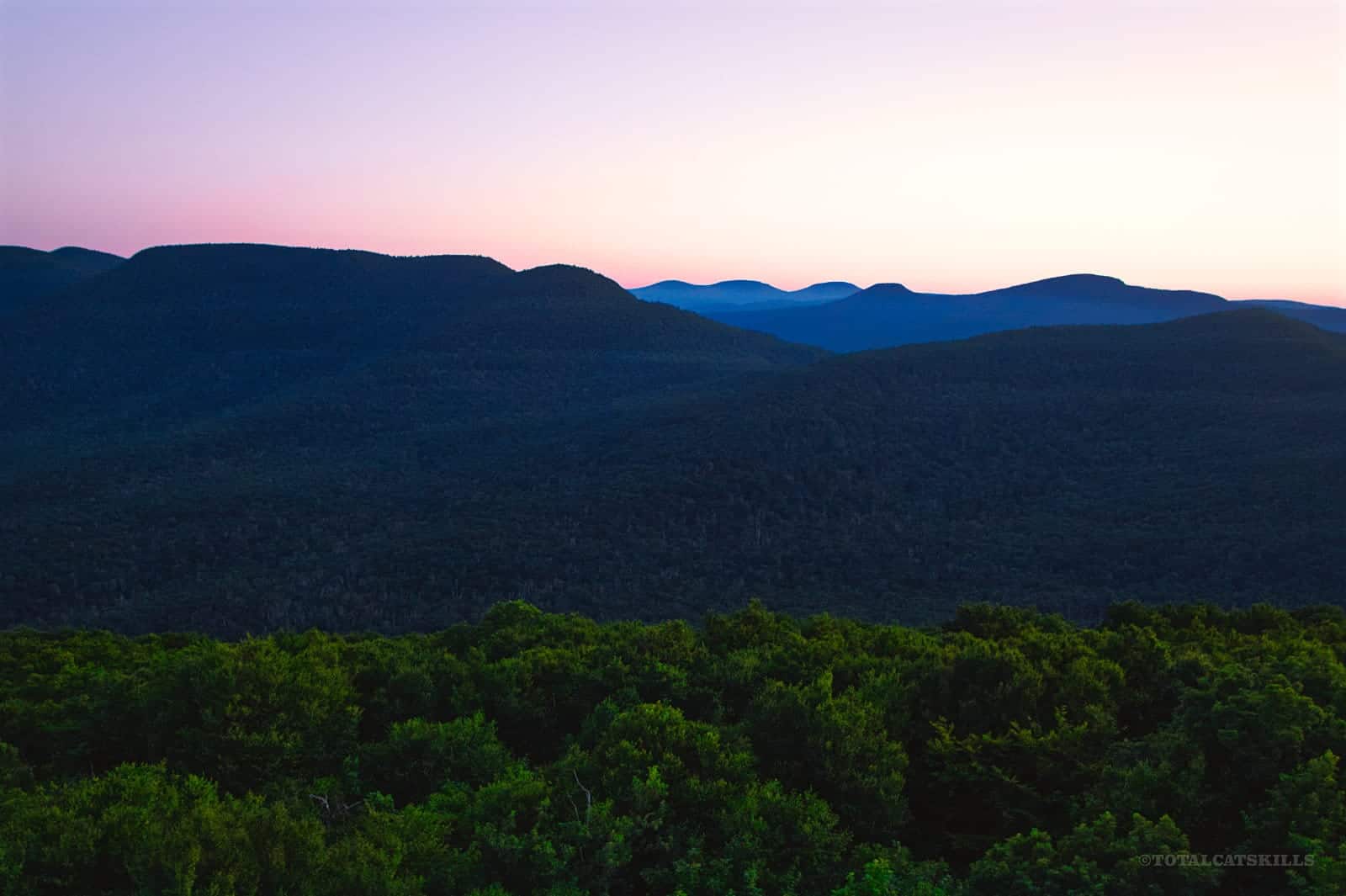
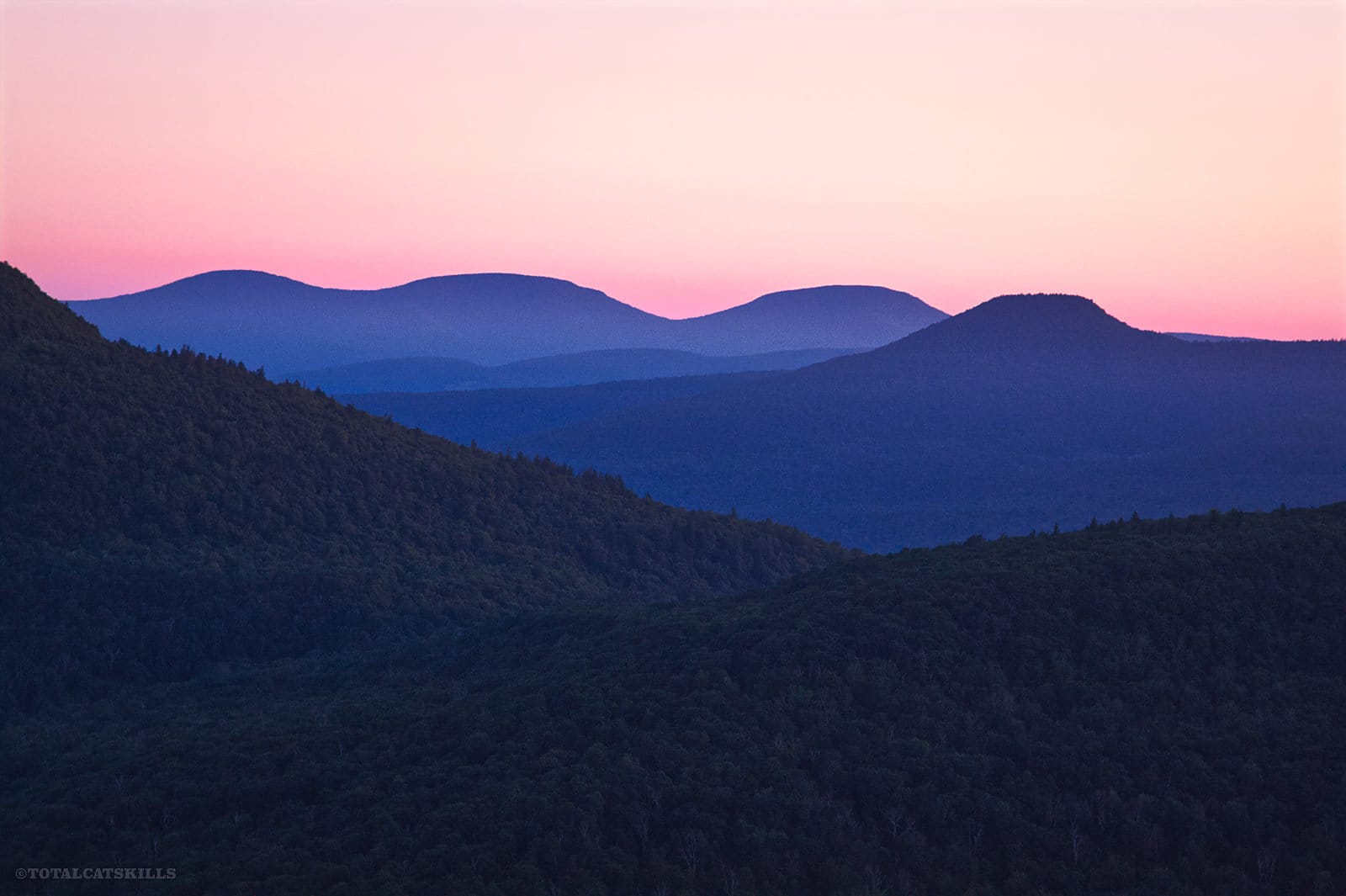
BTW, you might also enjoy…
- NEW › New York Hike Finder Tool
- CATSKILLS › Escarpment Trail Guide
- STAY › Find Your Perfect Catskills Stay
- ADIRONDACKS › Dix Range from Elk Lake
- ENTERTAINMENT › 15 Best & Worst Hiking Movies
- Follow › My Instagram @TotalCatskills
- Follow › My Substack @TotalCatskills
- Follow › My writing for Times Union
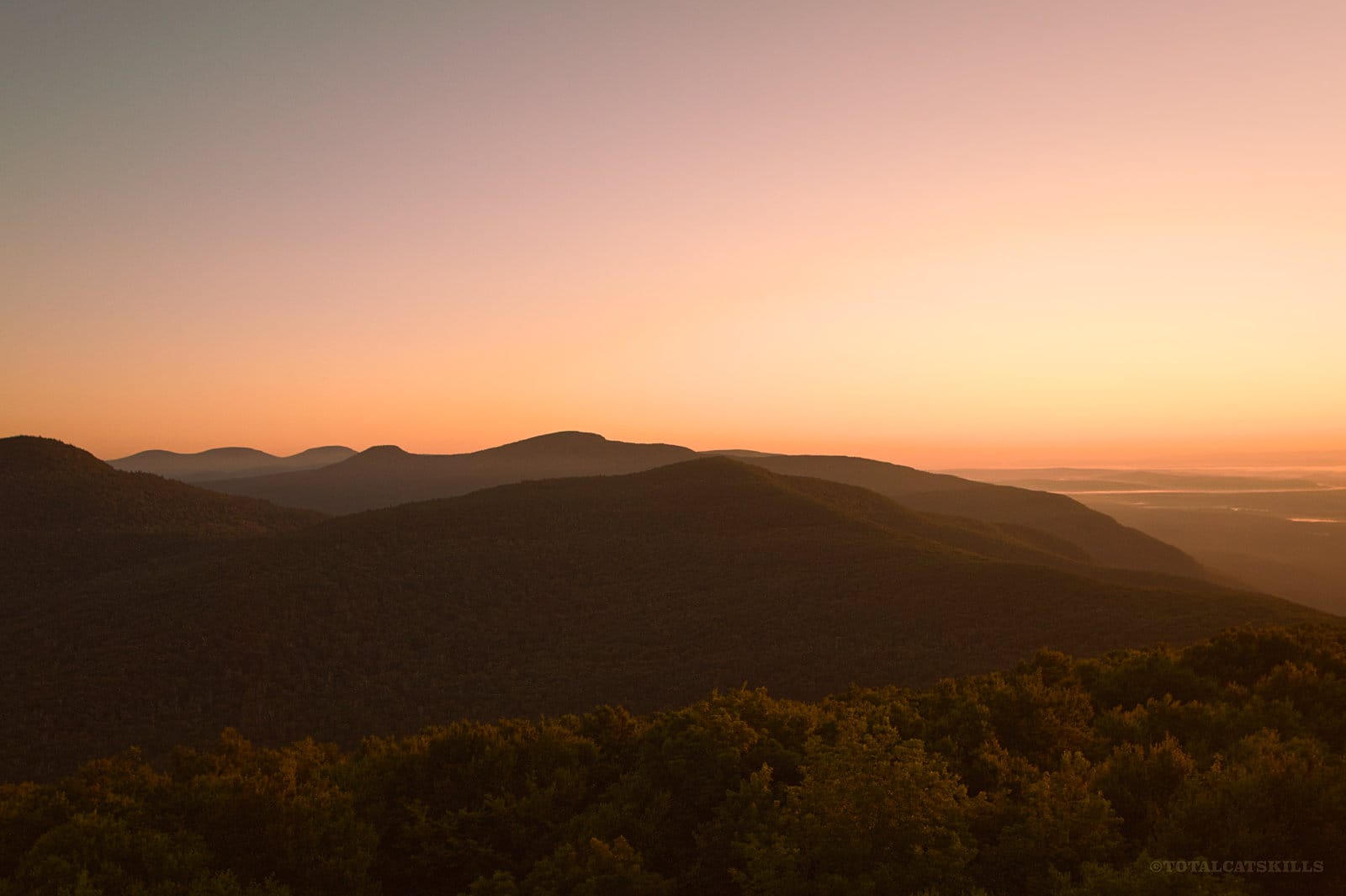
Planning
For sunrises, research locations facing east. For sunsets, you need views to the west. Duh!
Some photographers like apps like PhotoPills to help them plan locations and views.
But, really, you can also just let experience be your guide, and give over some hikes to trial and error, particularly with new locations. You just won’t know until you go, and the skies are always a gamble anyway.
- Get permission: make sure the location is open and public, or that you have explicit permission to access, cross, or use any private locations
- Confirm the timing: check your phone’s weather app for sunrise times
- Check the weather: no clouds is fine, some clouds is best, and overcast skies suck
- Plan for the chill: you’ll be standing relatively still for an hour or two, you’ll be sweaty from your hike, and there’s often a strong breeze as the terminator passes overhead; it is possible to become hypothermic even in summer
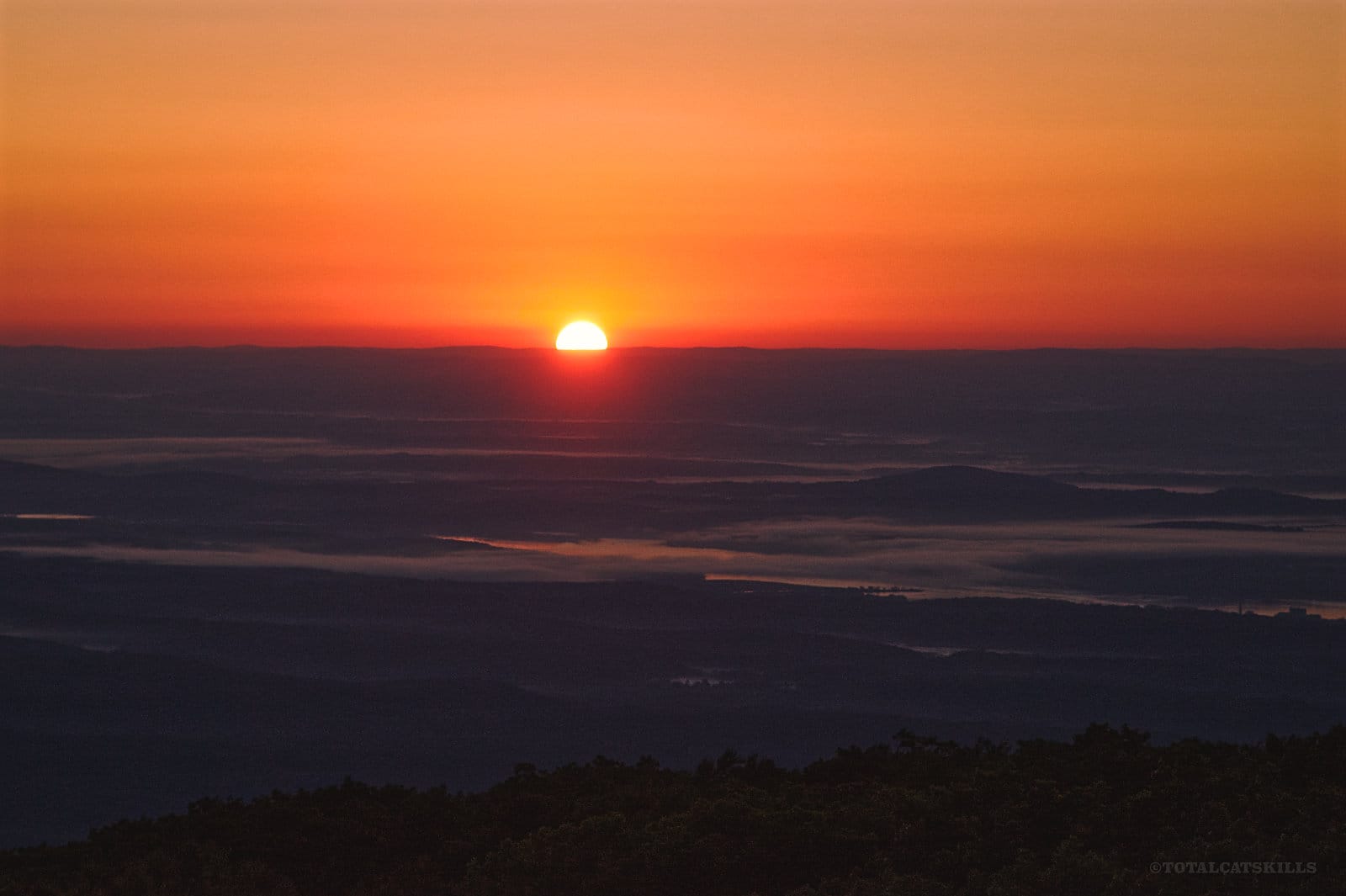
Sunrise/Sunset Photography Gear
- Headlamp and spare batteries: I recently switched up from a generic Amazon hiking headlamp to the Petzl Tikka Headlamp, which I really like — read how to choose a headlamp
- On every mountain hike, it’s crucial you pack the ten essentials
- Phone/DSLR: I switch between my iPhone and my Canon quite a bit; each has their strengths
- Several lenses: I have three prime (fixed focal length) lenses: a 20mm wide angle, a 50mm prime, and an 80mm long lens which is, ye gads, manual focus
- Fully charged batteries and empty memory cards
- Tripod? (Or just lean on things with your elbows and shoulders. On the other hand, if you plan on shooting long exposures or making HDR images, definitely bring your tripod. And if you’re bringing your tripod, you might as well pack your cable release too.)
- Graduated filters to compensate for extremes of dynamic range? (I don’t own any, but I see them in my future.)
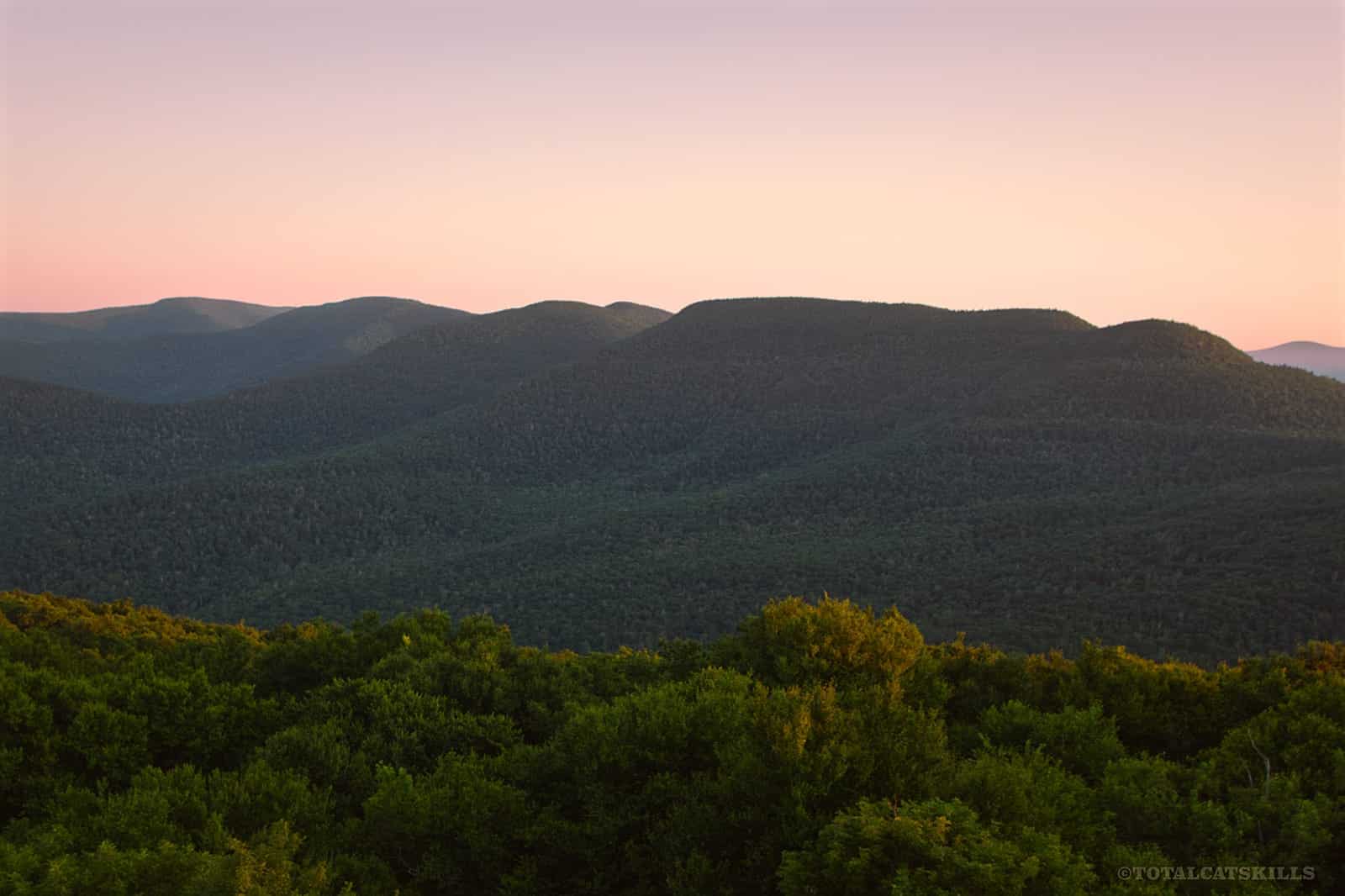
Best Camera Settings for Sunset & Sunrise
- Shoot in full manual (M) or aperture priority (Av) — you’ll be dealing with very low light which can confuse cameras, so you’ll need to take control of your settings to get the effects you prefer
- Before sunrise, try ISO 200 or ISO 400
- After the light brightens drop down to ISO 100
- An aperture of f/6 – f/10 will keep everything in focus
- Smaller apertures as the morning progresses, topping out at f/16 (aka “sunny sixteen”)
- If you’re shooting handheld, keep your shutter speed under 1/50 second
- White Balance: leave it on auto, as you’ll be tweaking everything in post anyway
- Shoot in Camera RAW, which is great for pulling extra detail back into highlights
- Bracketing? Yes. Do it. Especially when shooting for HDR
- If your autofocus is having issues in the low light, switch to manual focus
- To capture the night sky with stars, start with an ISO of 1600, your lens open to the widest aperture, and your shutter speed set to 10 seconds — see how that looks, then adjust on the fly
How to Photograph Sunrises & Sunsets
A quick review of some basics…
- Rule of thirds: use it 80% of the time, break it 20% of the time — or whatever numbers work for you
- Scale is so important: try to find an interesting target in the lower third/foreground of your image: a ridge, a building, a summit, even just some interesting texture, like tree-tops or a water body
- Subjects in the distance look best when the image also includes something closer
- Focus using trees
- Finally, good lord, keep your horizon level
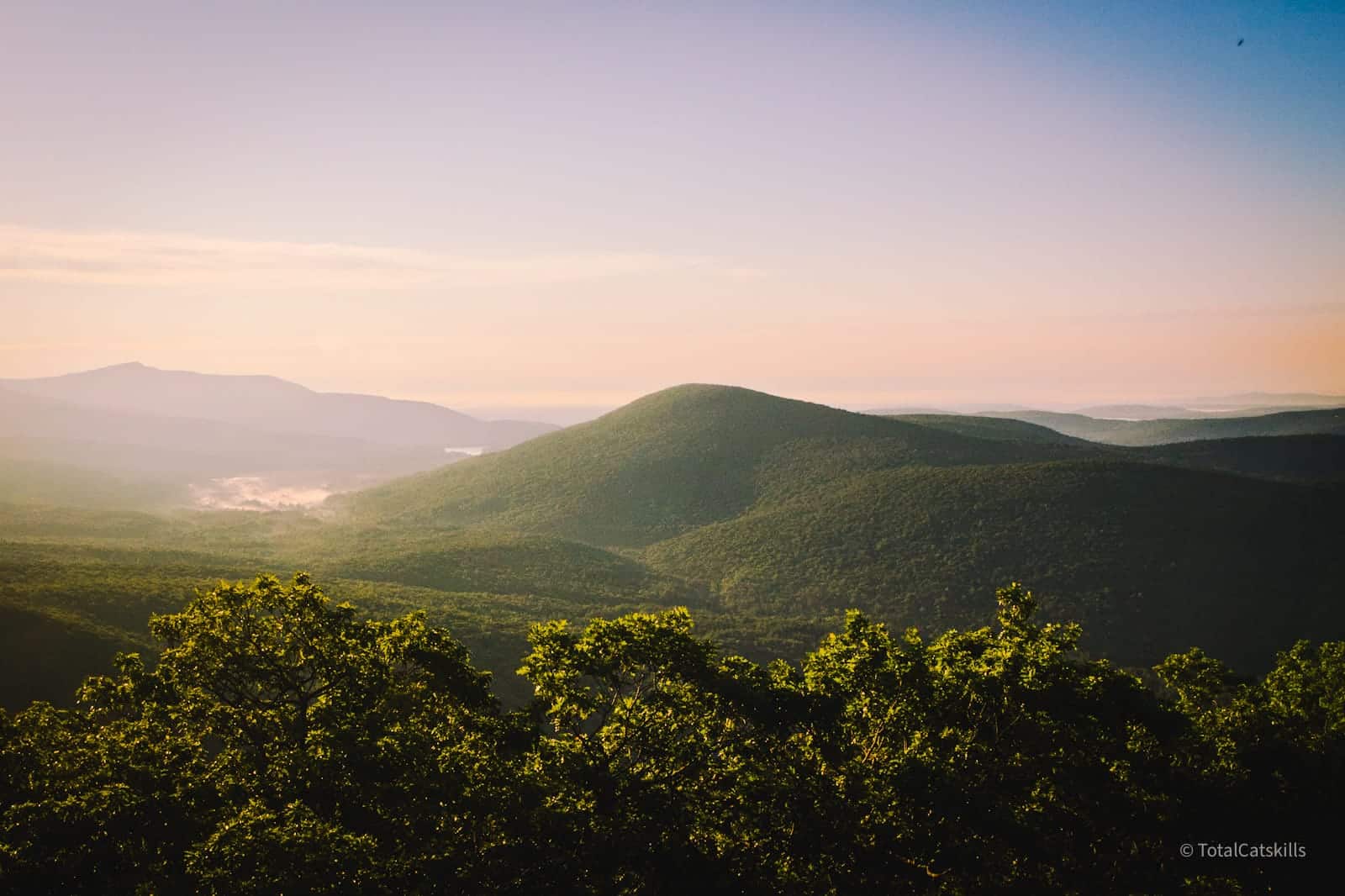
When to Shoot
Plan to arrive at your chosen viewpoint at least 45 minutes before sunrise.
Your phone will tell you when sunrise beings and you can figure out how long the hike up to your chosen viewpoint will take with this standard hike-timing formula.
- In New York, after the clocks spring forward, dawn is around 7:00 — however…
- By June 20/21 (shortest nights of the year), dawn breaks as early as 5:20am
- By Mid-July, dawn breaks at 5:45am
- By September 1, dawn breaks at 6:25am
- By October 1, dawn breaks at 6:55am
These very early summer sunrises can make nailing a sunrise photoshoot a bit of a pain. Start with something close to home that doesn’t require a long hike in to your destination.
To allow for my drive time and the short hike to Overlook’s Fire Tower I set my alarm for 3:00 am. I was in my car by 3:35 am and at the trailhead just after 4:00 am. I figured it would take about an hour to hike to the fire tower. As mountain hikes go, this hike is very short and easy.
Hiking to the summit of Mount Tremper took 1 hour 45 minutes. I arrived at the summit just after sunrise. I still got some great shots, but it was an early lesson in getting there before dawn. I started hiking at 4:30 am. I probably should have started hiking at 3:30 am.
In summer, a longer drive and a longer hike-in could mean getting up at 2:00 am, or even 1:00 am — these are not the wake-up times of a stable genius.
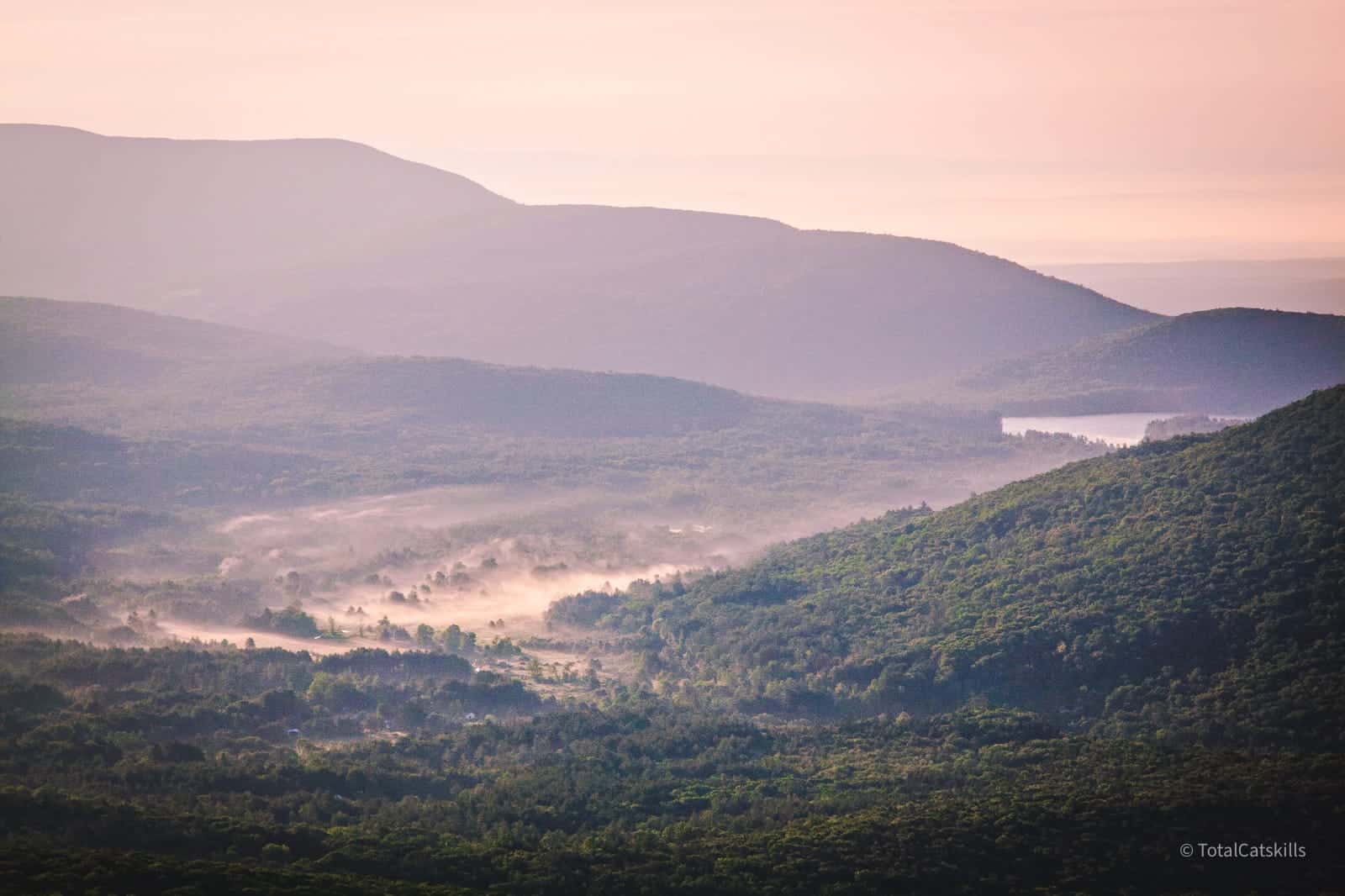
Sunrise Phases
Morning light is amazing for quite a while before the sun pokes its rim above the horizon. The sky starts to glow pinks, purples and reds, and there are no harsh shadows. Everything is soft. So shoot lots.
Sunrise itself is spectacular. So shoot lots.
And for a little while after, too — but, after sunrise, the light washes out very quickly. So shoot quickly.
After the sun has risen, hang around as long as you can. Don’t leave too early. The light will creep slowly into the lower valleys, burning away clouds and mists, and exposing new targets.
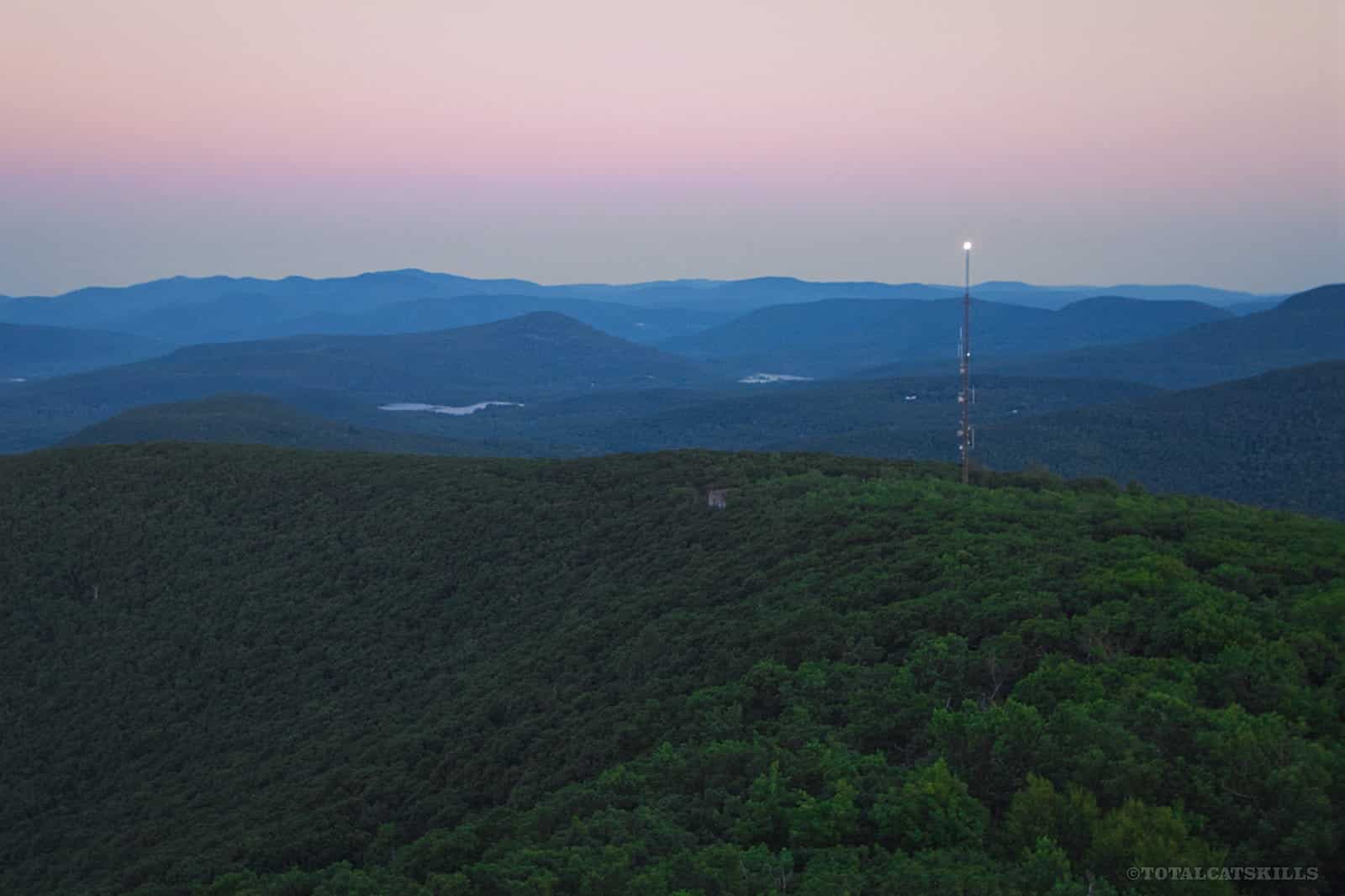
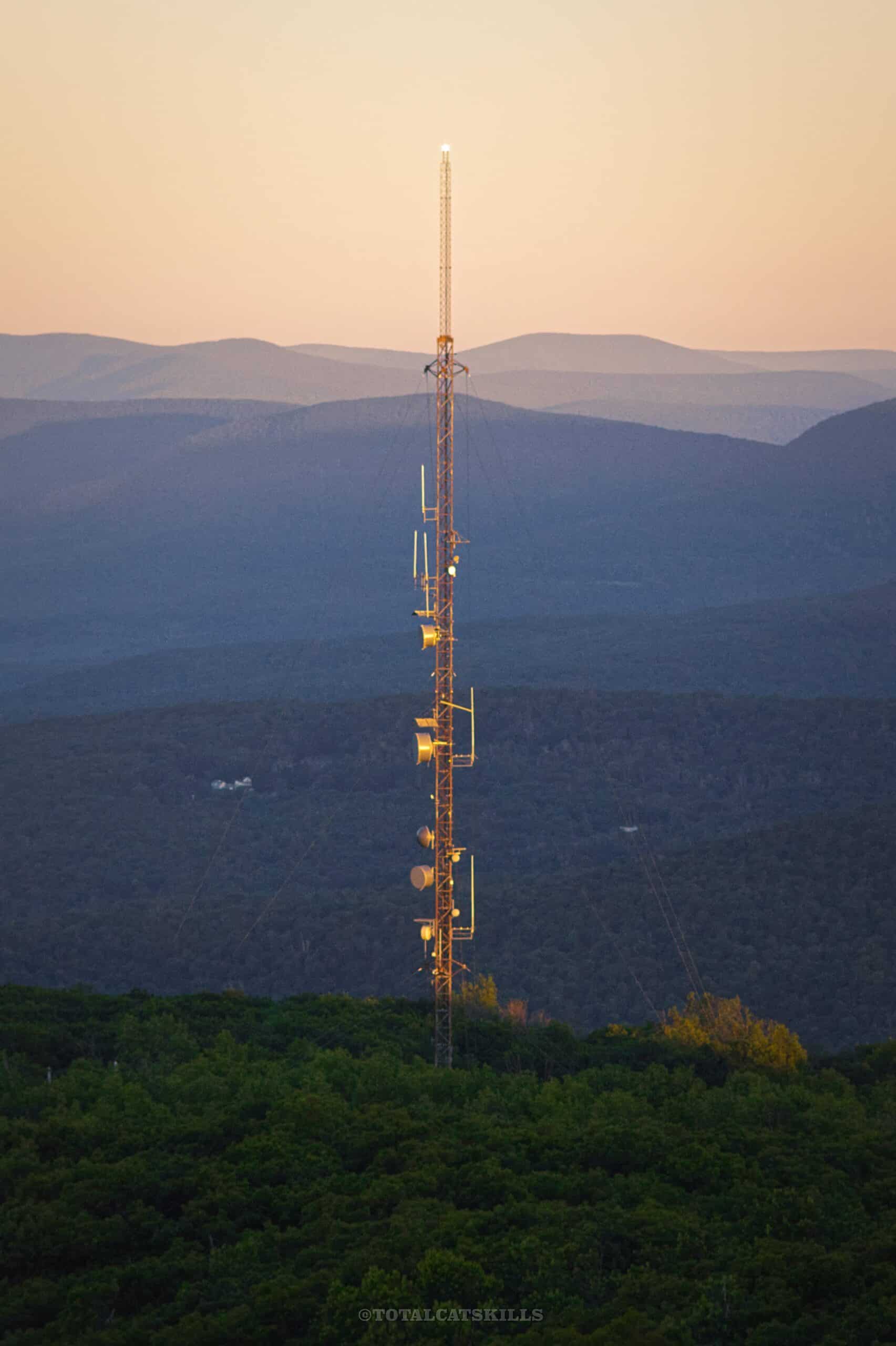
What to Shoot
Sunrise minutes are precious. Once the sun rises just a few degrees above the horizon, the landforms will look completely washed out and flat for the rest of the day — until sunset, anyway.
Shape & Texture
Watch how the sunrise heightens the dimensionality and texture of the landscape below you. The shape of the land is brought into clear view in a way that just can’t be beat.
The Light
Don’t just shoot toward the sunrise horizon. Look at how the light starts to warm up the tree tops and summits around you, how it falls across ridges and water bodies. The day’s first light is incredibly special. It doesn’t last long.
Starburst Effect
When the light allows, set your aperture to f/22 and shoot directly into the sun. The wider your lens, the more dramatic the starburst effect.

Water
Reservoirs, lakes, rivers and streams change radically as the early morning progresses. Water will turn from deep orange to indigo to white to blue, and back again, depending on cloud cover. It’s quite spectacular.
Scale
If there are any small towns or hamlets, perhaps with church spires or grain silos, include those for detail and a sense of scale.
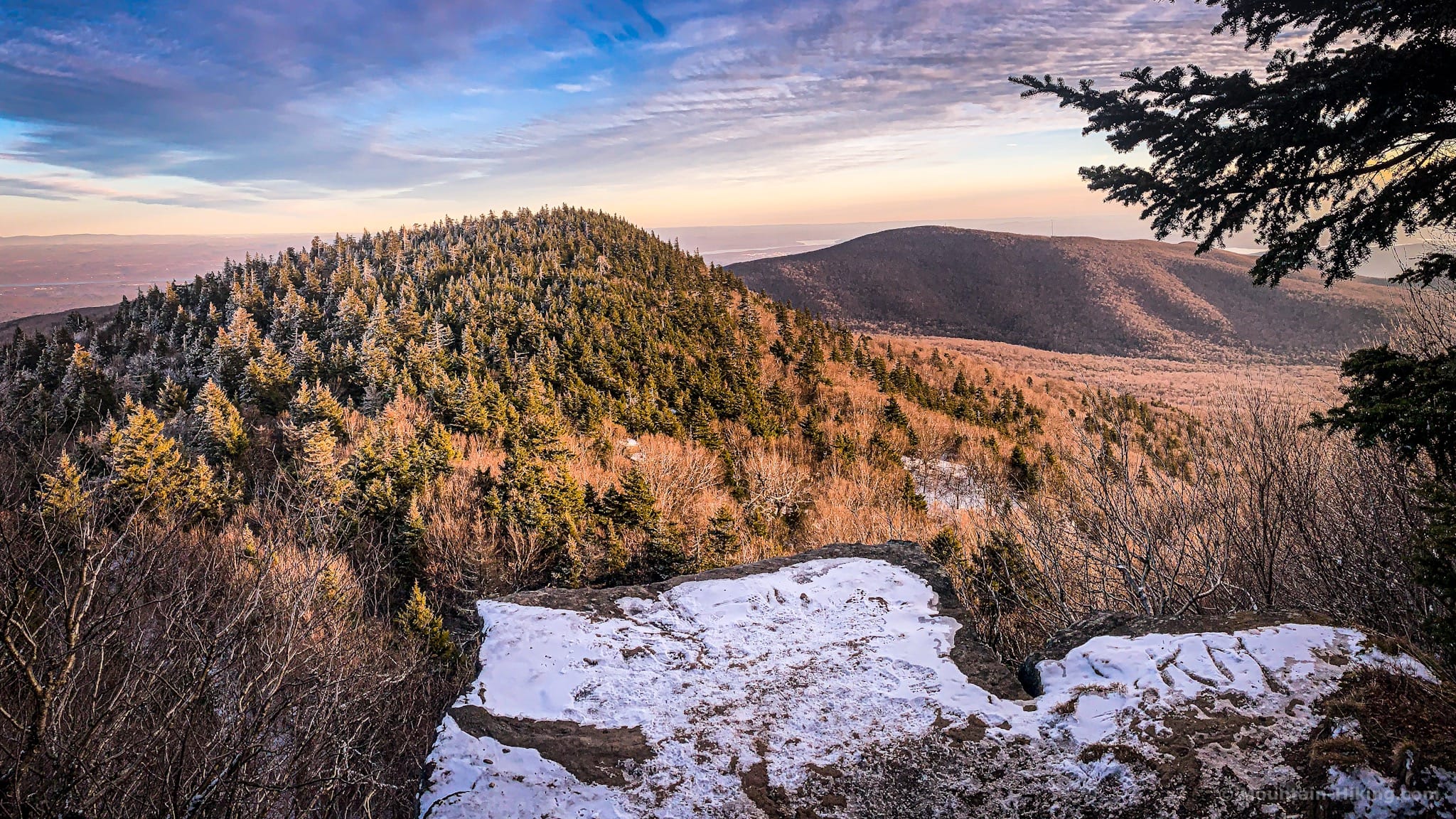
Some Clouds
If you’re lucky, you’ll experience that magical mix of clear sky and broken clouds and the sun’s rays will hit everything just right. Overcast? Bummer. Stay home and get some sleep.
Mist
Shoot early morning mists quickly. Depending on how the warm rays strike the topography, low clouds and mists will burn off in mere minutes.
Silhouettes
Try to capture the light in the sky and on the terrain — but also set exposures to turn mountains and trees into silhouettes against the morning sky.
Contrasts
The radio mast on Overlook was lit up by the warm morning light long before everything around it, which stayed dark, making the mast really pop (see above).
Shadows
Mountains cast enormous shadows. For example, from Overlook’s Fire Tower I was shocked to see the shadow of Overlook itself cast onto the Burroughs Range, which were 16 miles away.
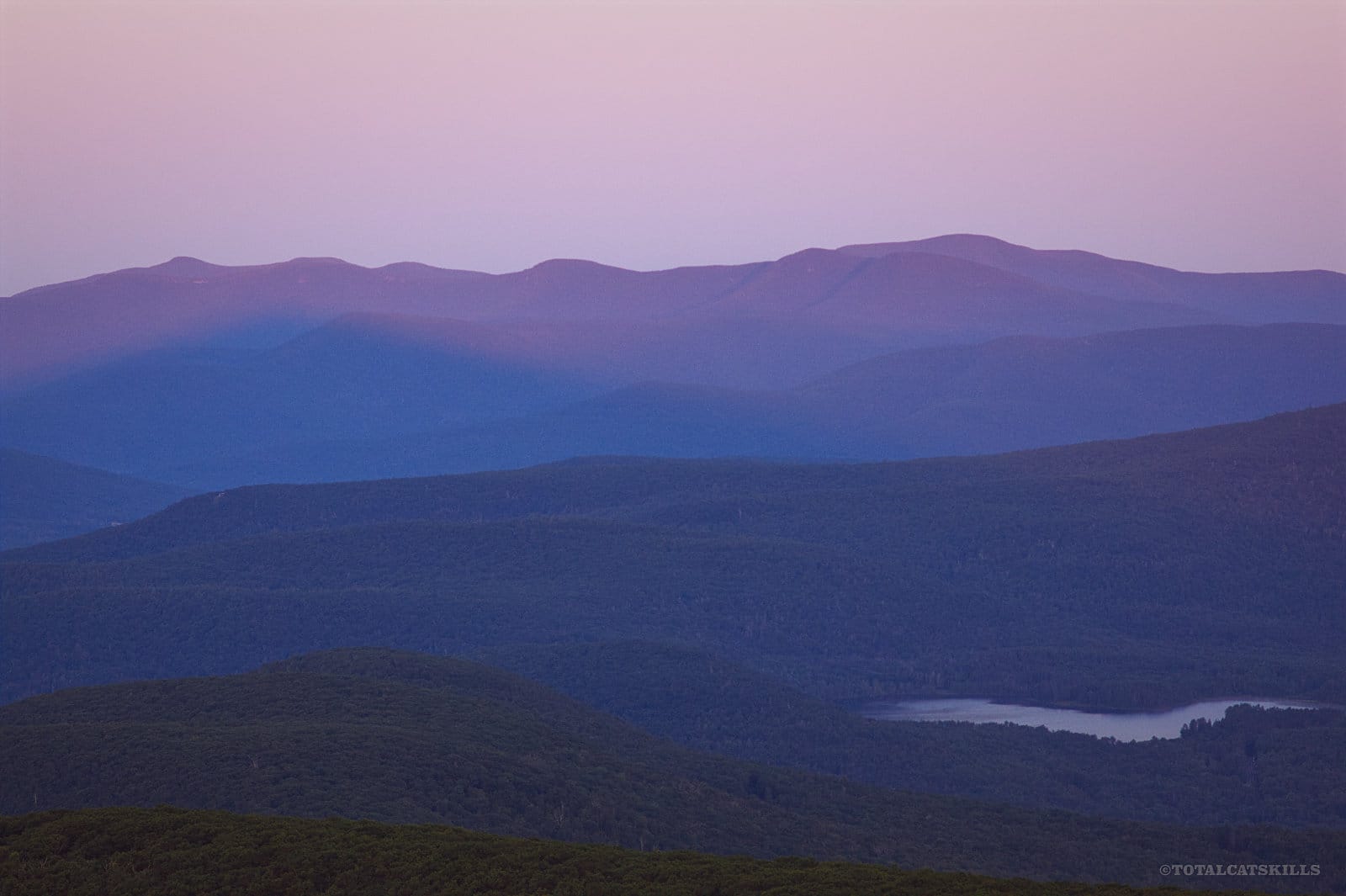
Stars & Planets
If you arrive early enough with a tripod, you’ll be able to expose for stars, even star trails, and maybe the moon in phase, as well as the brighter planets if they’re up.
All Directions
Make sure to shoot all four directions. It’s easy to get caught up shooting toward the sun, and not see how the light changes everything else too. Shoot west, north and south.
How to Photograph the Perfect Sunrise/Sunset
There’s a lot to do. The time passes quickly. Shoot fast. Shoot a lot. You won’t regret having 100-200 photos to sift through. Most importantly, bring snacks.
Read How to Prepare for Your First Sunrise Hike.
Here’s a list of sunrise hikes I’ve done. And here are my sunset hikes.
And remember to pack the Ten Essentials on every hike — they may save your life!
Get full access…
Get instant access to the full version of this site and enjoy great supporter benefits: full galleries, full trail notes, early access to the latest content, and more.
Hot on the website right now…
Follow for more…
Follow my @TotalCatskills content on Instagram for regular hiking inspo and safe, inclusive community.
